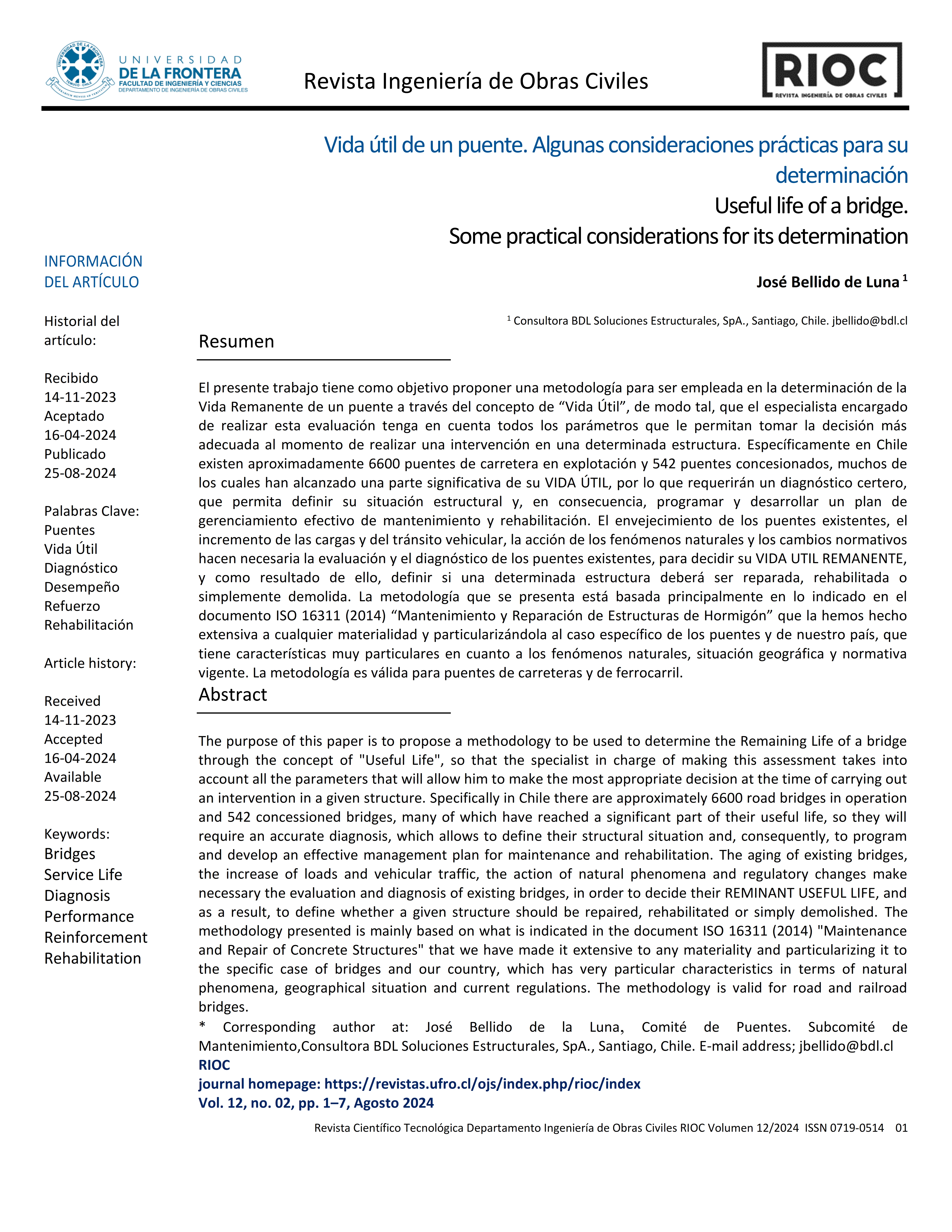Vida útil de un puente. Algunas consideraciones prácticas para su determinación
Keywords:
Puentes, Vida Útil, Giagnóstico, Desempeño, Resfuerzo, RehabilitaciónAbstract
The purpose of this paper is to propose a methodology to be used to determine the Remaining Life of a bridge through the concept of "Useful Life", so that the specialist in charge of making this assessment takes into account all the parameters that will allow him to make the most appropriate decision at the time of carrying out an intervention in a given structure. Specifically in Chile there are approximately 6600 road bridges in operation and 542 concessioned bridges, many of which have reached a significant part of their useful life, so they will require an accurate diagnosis, which allows to define their structural situation and, consequently, to program and develop an effective management plan for maintenance and rehabilitation. The aging of existing bridges, the increase of loads and vehicular traffic, the action of natural phenomena and regulatory changes make necessary the evaluation and diagnosis of existing bridges, in order to decide their REMINANT USEFUL LIFE, and as a result, to define whether a given structure should be repaired, rehabilitated or simply demolished. The methodology presented is mainly based on what is indicated in the document ISO 16311 (2014) "Maintenance and Repair of Concrete Structures" that we have made it extensive to any materiality and particularizing it to the specific case of bridges and our country, which has very particular characteristics in terms of natural phenomena, geographical situation and current regulations. The methodology is valid for road and railroad bridges.
Downloads

Downloads
Published
How to Cite
Issue
Section
License
Copyright (c) 2024 José Bellido de Luna

This work is licensed under a Creative Commons Attribution 4.0 International License.
The authors who publish in this journal accept the following conditions:
- The authors retain the copyright and assign to the magazine the right of the first publication, with the work registered with the Creative Commons attribution license, which allows third parties to use the published information whenever they mention the authorship of the work and the First publication in this journal.
- Authors may make other independent and additional contractual arrangements for non-exclusive distribution of the version of the article published in this journal (eg, include it in an institutional repository or publish it in a book) as long as it clearly indicates that the work Was first published in this magazine.
- Authors are encouraged and encouraged to publish their work on the Internet (for example, on institutional or personal pages) before and during the review and publication process, as it can lead to productive exchanges and a greater and faster dissemination of work Published (see The Effect of Open Access).







